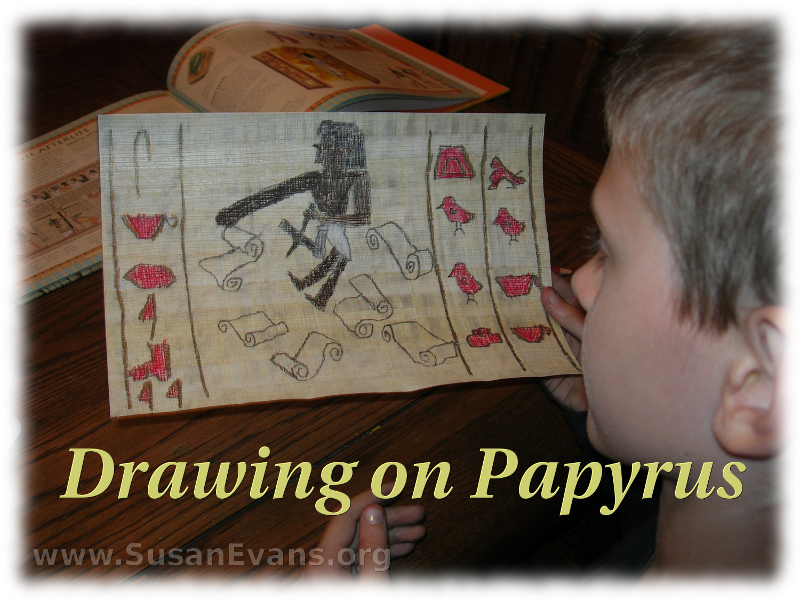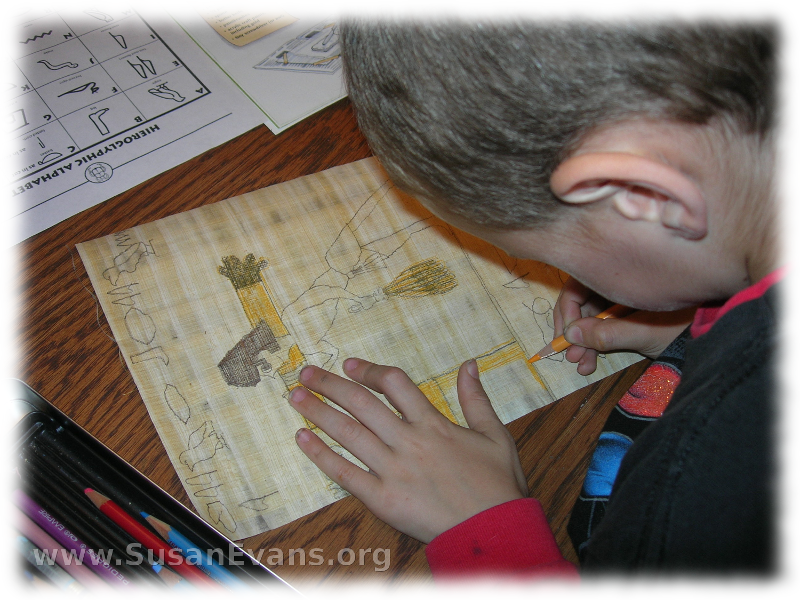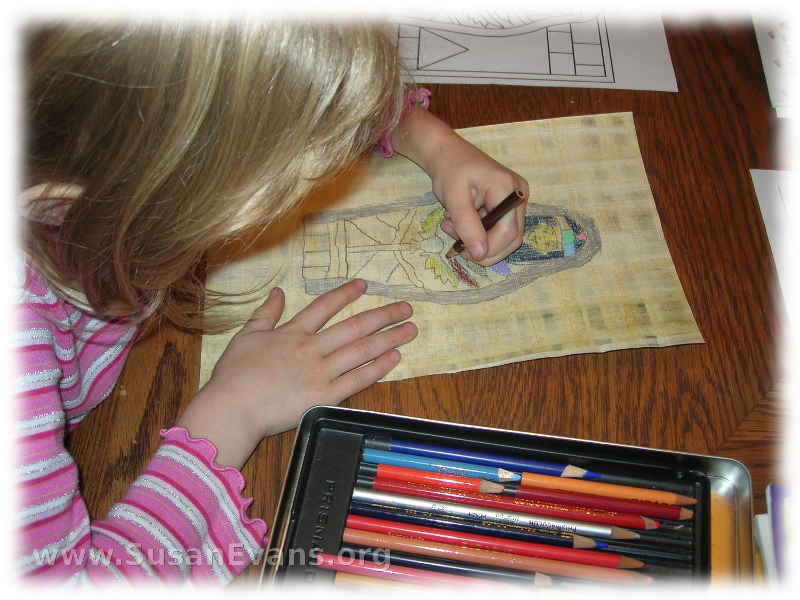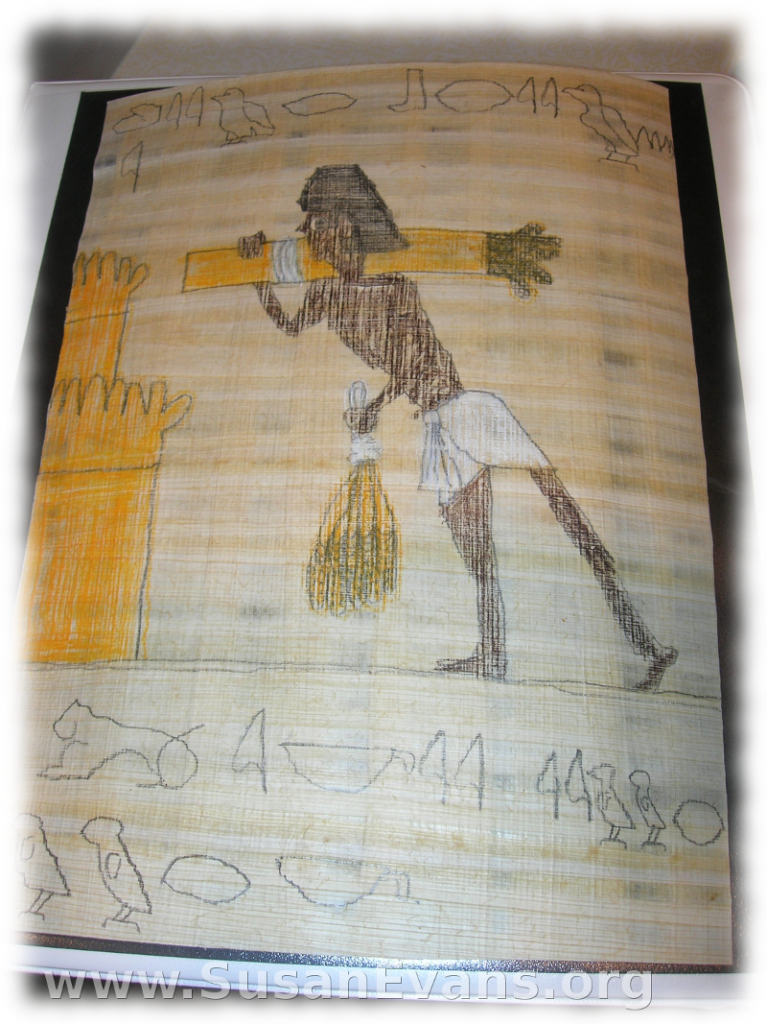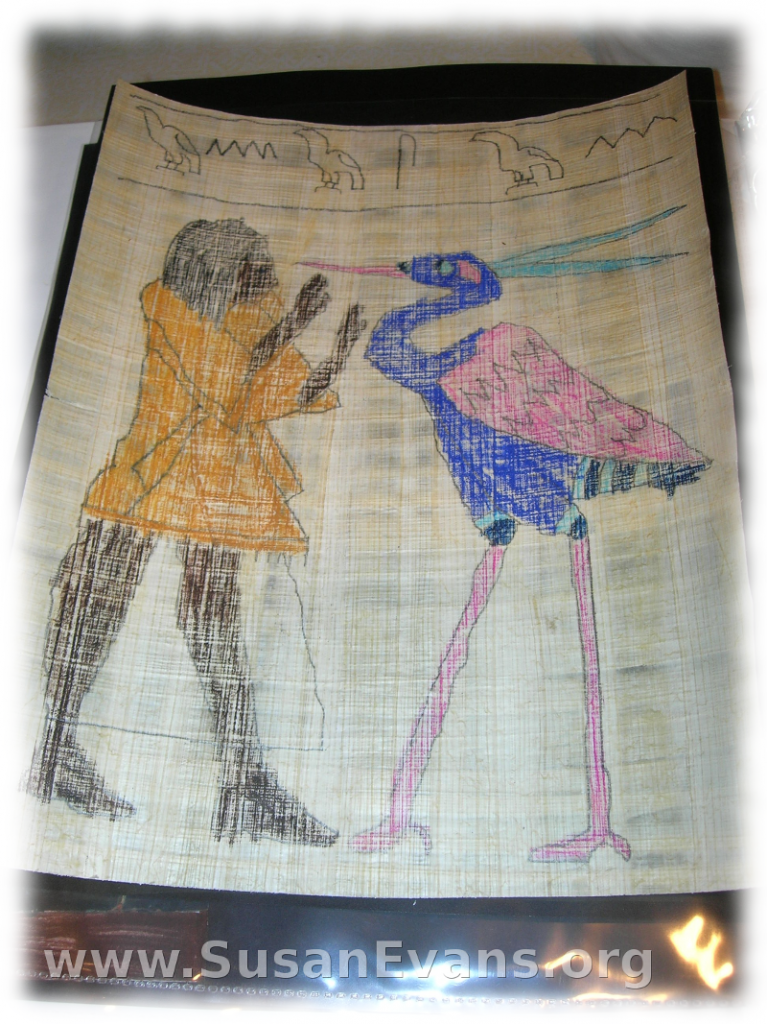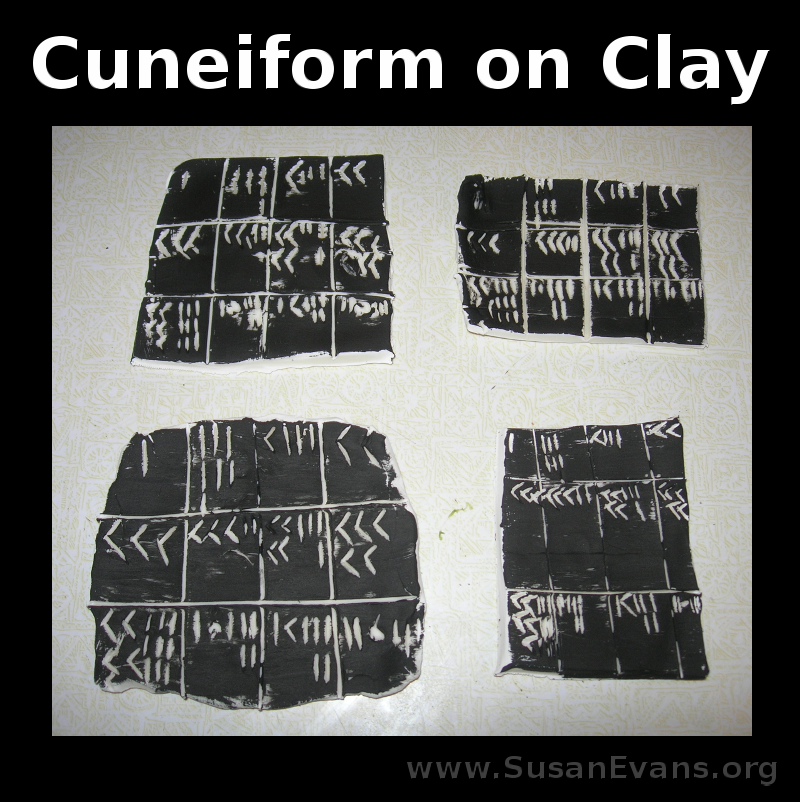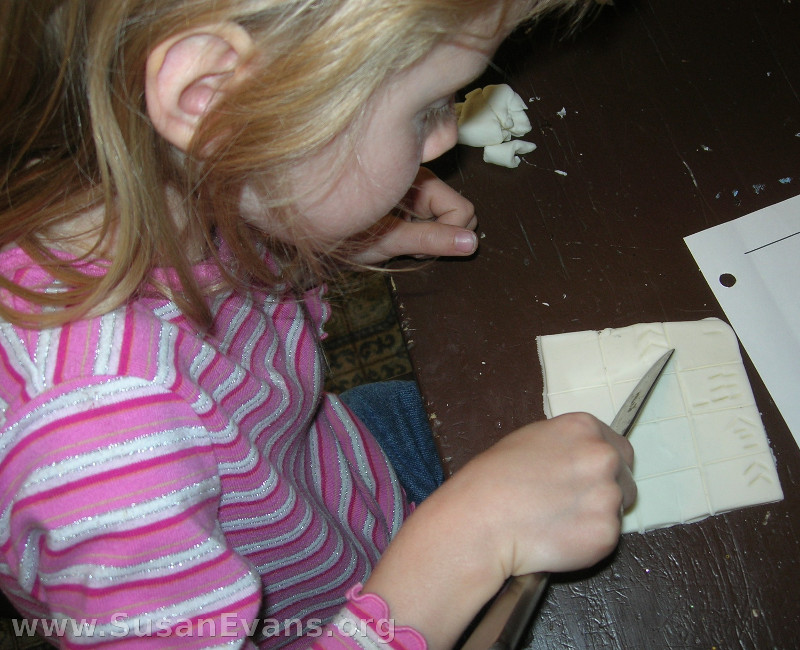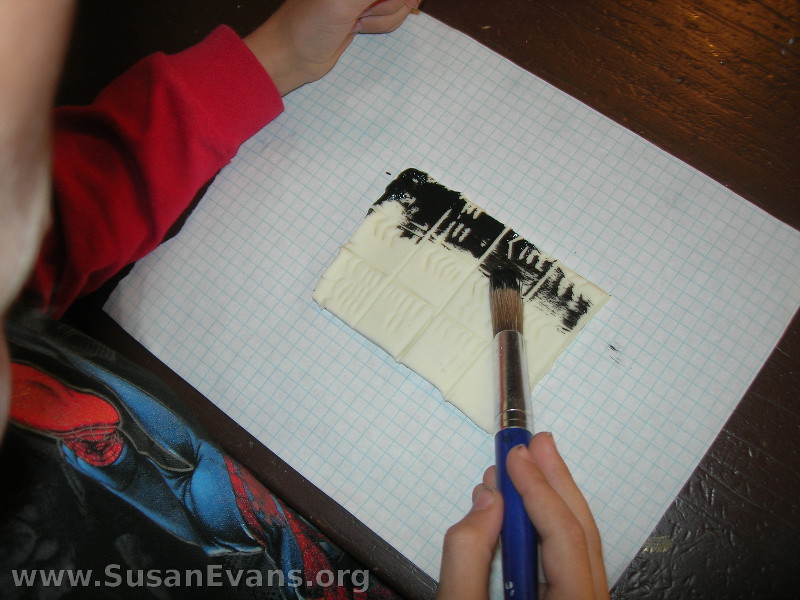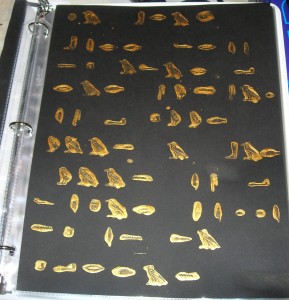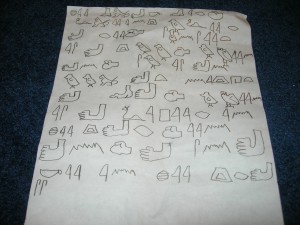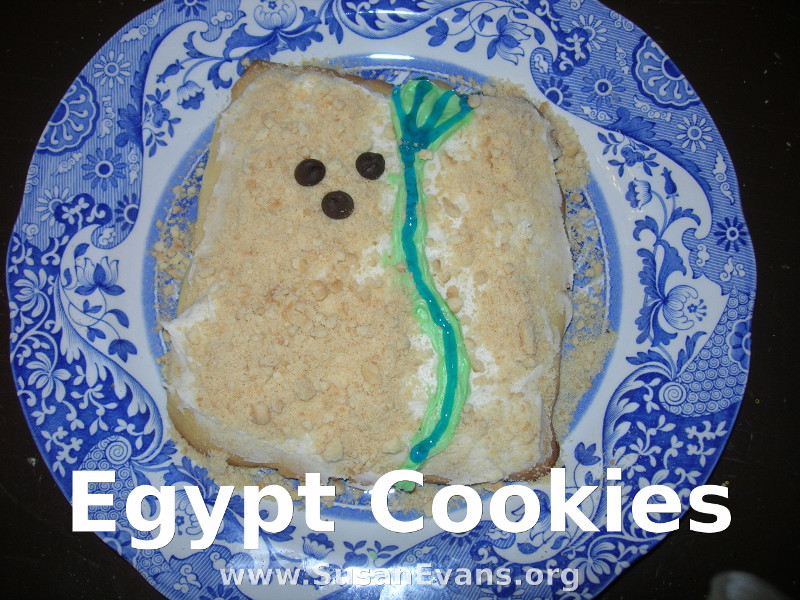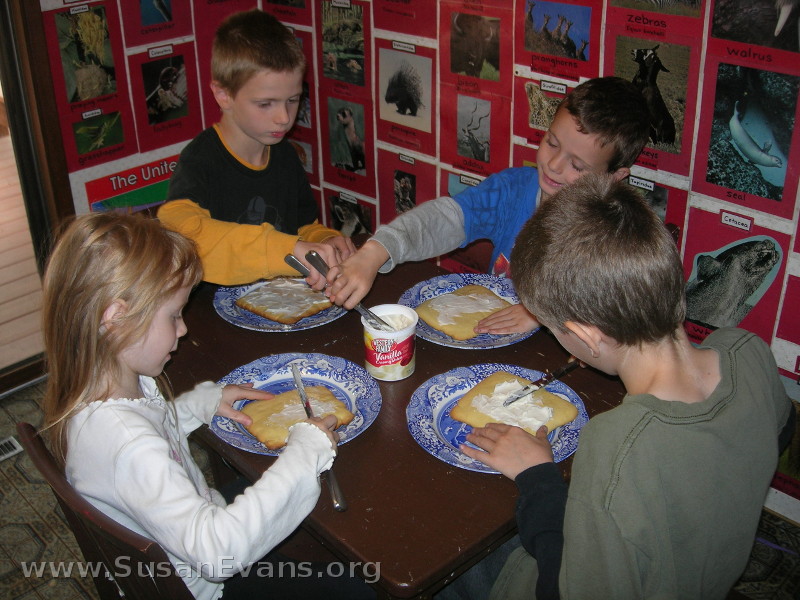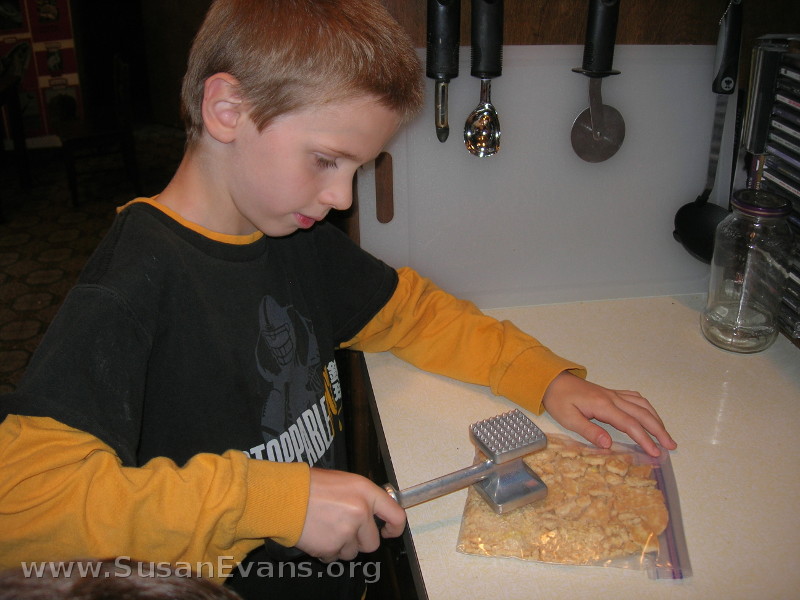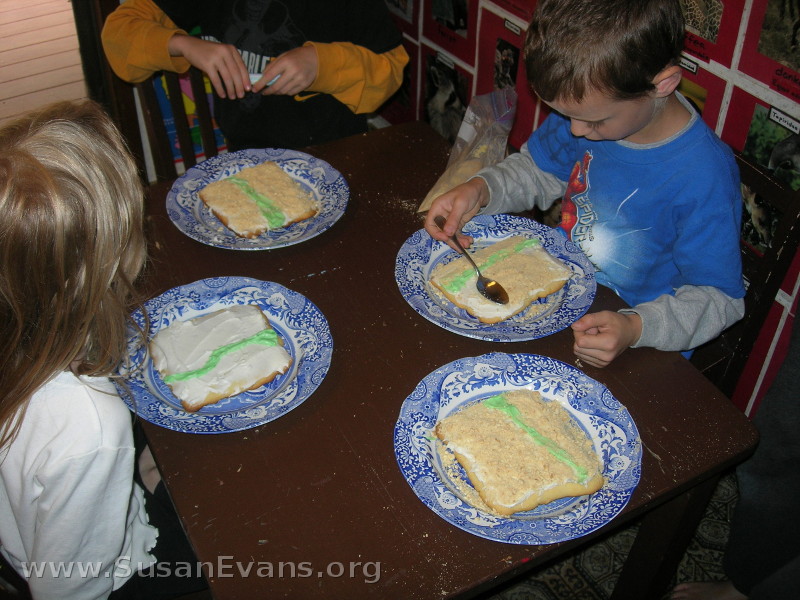I bought some papyrus paper at a teacher supply store. I looked on the back, and the papyrus was actually made in Egypt. I gave one sheet to each child, along with a pencil. My 10-year-old son grabbed one of our Egypt books, opened it up for ideas, and drew a scribe along with some hieroglyphs. The children colored their drawings with colored pencils. (I use Prismacolor colored pencils because they glide on more smoothly, and there are some metallic colors.)
 My 8-year-old son wanted something easy, so I showed him a coloring book of Ancient Egypt. Children find black and white sketches easier to draw than finished illustrations from books.
My 8-year-old son wanted something easy, so I showed him a coloring book of Ancient Egypt. Children find black and white sketches easier to draw than finished illustrations from books.
My 7-year-old designed his own picture based on a page from another book. He wrote a story in hieroglyphs. His picture is absolutely precious. It looks similar in style to all the other drawings he makes. He loves drawing, almost as much as my oldest son, Bryan.
My 5-year-old girl took one look at the coloring book page that she had chosen, and she decided to trace it. Too bad that papyrus is so thick. We did this project after dinner one night, and my husband heard her scream and cry when she found out she couldn’t trace it. My husband took the coloring book, photocopied the one page she chose, taped it to the window, then taped the papyrus to the window. Luckily there was still enough light outside to trace the drawing. (The lights were off in the room where she was drawing, so that she could see through the papyrus.)
When she finished tracing it, she was so proud of her work. She colored it and added a few random hieroglyphs. (She didn’t realize that her brothers were writing real stories with their hieroglyphs, and she wanted to do what they were doing.)
We put their finished papyrus papers into their Egypt notebooks, sliding them into the sheet protector.
